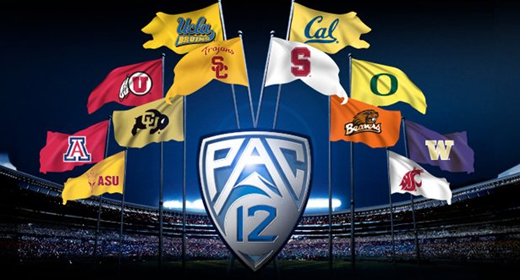The Hotline mailbag is published every Friday. Send questions to pac12hotline@bayareanewsgroup.com and include ‘mailbag’ in the subject line — or hit me on Twitter: @WilnerHotline.
*** Please note: Several topics related to Pac-12 media rights and expansion will be answered separately, in forthcoming articles.
(Some questions have been edited for clarity and brevity.)
What is it about Arizona’s one national championship that causes people to mistake them for a powerhouse blueblood program? — @scottyrev
The blueblood debate is tricky, but we’re perfectly willing to dive right in.
Many UCLA fans, or folks who simply don’t like Arizona, are quick to mock any reference to the Wildcats as a college basketball blueblood.
But there isn’t a firm definition of the term, and the Hotline would argue that UCLA’s status as a blueblood program is questionable.
If you’re semi-relevant on the national scene for a half-century, are you actually a blueblood?
The Bruins have one national title in the past four decades — the same total as the Wildcats. Meanwhile, Connecticut has four in that span.
Do you consider the Huskies a blueblood? If not, then UCLA surely isn’t one.
The best comparison for the Bruins is Indiana, which owns five NCAA titles but hasn’t been the last team standing since 1987, just eight years before UCLA’s last trophy.
The Hotline considers both UCLA and Indiana to be semi-bluebloods — on the second tier behind Kansas, Kentucky, Duke and North Carolina.
(We would place UConn on that level. Yes, the Huskies have four NCAA titles, but they were not an elite program prior to the 1990s. Michigan State also belongs on the second tier.)
Meanwhile, Arizona, which has four trips to the Final Four — all of them since the late 1980s — belongs on the third tier.
The Wildcats aren’t UCLA’s equal, because you cannot discount what happened 50 years ago. But UCLA isn’t a true blueblood, because you must account for the past half-century.
Since John Wooden’s retirement, the Bruins have three separate stretches in which they have gone at least a decade between Final Four appearances.
That’s not good enough to be considered one of the few true bluebloods.
Would the Pac-12 be better off letting Arizona leave and replacing the Wildcats with SMU? Arizona football brings nothing to the table. SMU has a far better chance of competing nationally compared to Arizona. — @17Readymade
The Pac-12 absolutely would not be “better off” if the Wildcats left for the Big 12. The school is an important fit institutionally and possesses a tentpole basketball program.
But you are correct: Football is the prime driver of media dollars; football supports all the Olympic sports; football determines conference strength; and Arizona has a second-rate football program with just three 10-win seasons in school history.
And you’re correct that SMU has a better chance to become nationally relevant in football than Arizona — a better chance, in fact, than most schools in the Pac-12.
That’s right: SMU’s football potential is greater than any of the remaining 10 schools, save for Oregon, Washington and perhaps Utah.
Why do I say that?
Because SMU is located in a football hotbed with dozens of blue-chip prospects within a short drive of campus.
Because it’s a private school that can funnel resources as desired, with no bureaucratic impediments.
And because it has immense donor support, with a huge endowment ($2 billion) and wealthy alumni.
As one source told the Hotline: “Besides USC and Oregon, nobody in the conference could beat SMU’s resources.”
Our sense is that membership in the Pac-12 would provide the school — and its donor base — with the motivation to plow resources into the football program (hello, NIL!) and eventually lead to success that’s currently difficult to envision.
Does that mean the Mustangs would become a power? No. But they could quickly become a top-half football program within the reconstituted Pac-12.
My understanding is that the Pac-12 conference office receives the equivalent of a full team’s share from the current media deal. So the pot is actually divided 13 ways and not 12. Will that be the case with this next deal? — @snowsurfah
The Hotline cannot claim to know specifics on this topic, but we can guarantee readers that the revenue currently allocated for conference operations will be diminished in the next media deal.
Put another way: A greater share of the total influx will be spun off to the schools.
Rent alone will be reduced by millions annually with the move out of San Francisco.
In your opinion, how long is “the very near future?” To me, it’s a week or two. A month is “the near future.” –@draywilson29
It’s two or three weeks, maximum.
I don’t know whether every aspect of the Pac-12’s media rights negotiations will be wrapped up by early April. But the presidents should know the basics of the term sheet and whether they plan to sign a grant-of-rights agreement.
And they will know if expansion makes sense.
We are close, folks. We are close.
How much (more) collective media value might a truly Western Super Conference be worth? I’m not sure where you draw the line on “Western” if you exclude current Big 12 schools, and who would count as a prospective member? — @Cargoman0363
We applaud the outside-the-box thinking, but I’m skeptical of the value potential.
Let’s say the remaining schools in the Pac-12 signed a media rights deal for $30 million annually per school.
Now, consider that football accounts for about 80 cents of every media dollar spent on broadcast rights and that valuation depends on market size, brand recognition and on-field success.
Are there any Group of Five football programs in the western half of the country worth more than $24 million annually (or 80 percent of $30 million)? It doesn’t seem so.
What if you blew everything up? Would an eight-team conference with Washington, Oregon, Stanford, Arizona State, San Diego State, Utah, Colorado and SMU command more than $300 million?
Perhaps, but that scenario brings a slew of complications and isn’t reasonable on multiple levels.
Once you start adding schools to that octet, the overall valuation drops. Everyone else would be dilutive.
If Gonzaga were to leave the West Coast Conference, where does that leave Saint Mary’s? Do they ask for the Gonzaga deal? — @skiswm
The Gaels don’t have Gonzaga’s clout and couldn’t reasonably command an outsized share of the revenue.
Any such demand would undoubtedly be met with “pound sand” as the response from other members.
The Hotline remains both skeptical that Gonzaga would place its Olympic sports in the Big 12 and convinced the university wants to house all its sports in the same conference.
The equity issues become daunting if men’s basketball is treated differently than all other sports.
When San Diego State leaves the Mountain West, there will not be a MWC school south of Fresno. Is the conference open to non-football schools that aren’t named Gonzaga? Like Cal State Fullerton or UC Irvine? — @LAWomensHoops
SDSU’s departure isn’t a given, although we believe it’s more likely than not.
If the Aztecs leave, the Mountain West will have a crater on its southern border. New commissioner Gloria Nevarez and her team undoubtedly have a plan for replacing SDSU, but I cannot imagine a shift to non-football schools.
None of the Big West members would bring the needed dollars.
The more likely consideration for the MW would be to consider backfilling with football schools from the Big Sky. They don’t have market value but would provide game inventory for the conference to offer its media partners.
And don’t forget: Fresno State could be an expansion target for the Big 12.
Does Colorado State have a realistic shot at Pac-12 expansion? — @mickbricks
Only if Colorado leaves for the Big 12 — and only if Colorado’s departure doesn’t spark a multi-team exodus that decimates the conference.
If the Buffaloes leave and attrition is otherwise limited, then Colorado State could have a path into the Power Five.
We don’t know for sure that Pac-12 presidents authorized commissioner George Kliavkoff to vet CSU as an expansion target, but that move would make sense if the board viewed Colorado as a flight risk.
CSU would preserve a foothold in Colorado; it’s an R1 research school; and it owns a respectable placement (No. 151) in the U.S. News and World Report rankings.
Have the Big 12 schools signed their next grant-of-rights deal? Or would it still be possible for the Pac-12 to pick off some combination of Houston, Texas Tech, Oklahoma State or Baylor in expansion? — Doug Ware
If the Pac-12 deal ends up comparable to the Big 12, could Kansas be a consideration for Pac-12 expansion? They are the last remaining AAU school in the Big 12. — David May
The Hotline has always believed Kansas fits better in the Pac-12 or the ACC than the Big 12 from an institutional standpoint.
[related_articles location=”left” show_article_date=”false” article_type=”automatic-primary-tag”]
But the Big 12 schools have signed their grant-of-rights, according to commissioner Brett Yormark, thus binding each university to the conference for the duration of the next media rights cycle.
(The Big 12’s deal begins in the summer of 2025 and expires in 2031, one year after the Big Ten’s new media agreement.)
The Pac-12 could have added Kansas, or any combination of Big 12 schools, two summers ago — it could have added all eight — but opted to stand down.
None of them were deemed financially additive or worthy institutional fits by the Pac-12 presidents.
I know the question that’s on every Pac-12 basketball fan’s mind: What’s your take on Stanford bringing back Jerod Haase for another year? — @Sam_Stapleton_1
The move wasn’t surprising. Athletic director Bernard Muir is clearly committed to Haase regardless of performance.
The bigger issue for Stanford is that the decision to retain Haase for Year Eight generated such little response from fans and media.
The program, which once moved the needle within the Bay Area and Pac-12 sports scenes, has become completely irrelevant.
And the university doesn’t seem bothered by that.
Which is more fun: Talking about actual games or the continual speculation and bickering of college realignment? Is realignment now perpetual? — @GeoQCannon
It’s perpetual, but hardly annual. If the Pac-12 stabilizes with a contract that lasts through the decade, we should be finished with realignment until the Big Ten negotiates its next contract in 2029-30.
Depending on expansion decisions made at that point, the Power Five structure could remain intact for years or rupture completely.
The Hotline loves complex issues that resonate with readers, and nothing clears both bars quite like realignment. (NCAA legislative issues are complicated, too, but nobody cares.)
That said, we are rooting for the Pac-12 saga, however it ends, to end quickly.
We could use a day off.
*** Send suggestions, comments and tips (confidentiality guaranteed) to pac12hotline@bayareanewsgroup.com or call 408-920-5716
*** Follow me on Twitter: @WilnerHotline
*** Pac-12 Hotline is not endorsed or sponsored by the Pac-12 Conference, and the views expressed herein do not necessarily reflect the views of the Conference.
Related posts:
 Pac-12 bowl projections: Major changes at the top as Oregon becomes our pick for the CFP
Pac-12 bowl projections: Major changes at the top as Oregon becomes our pick for the CFP

Arizona wide receiver Jacob Cowing, left, celebrates a touchdown by wide receiver Tetairoa McMillan during . (AP Photo/Mark J. Terrill)
Pac-12 rewind: Sifting through the wild weekend as Oregon and UCLA fall, Arizona rises and the Bay Area teams unravel Pac-12 bowl projections: USC, the New Year’s Six and four scenarios for the stretch run
Pac-12 bowl projections: USC, the New Year’s Six and four scenarios for the stretch run

Southern California head coach Lincoln Riley (AP Photo/Mark J. Terrill)
Pac-12 preview: Title game scenarios, huge TV ratings, an Apple Cup twist, rookie coach success and more
